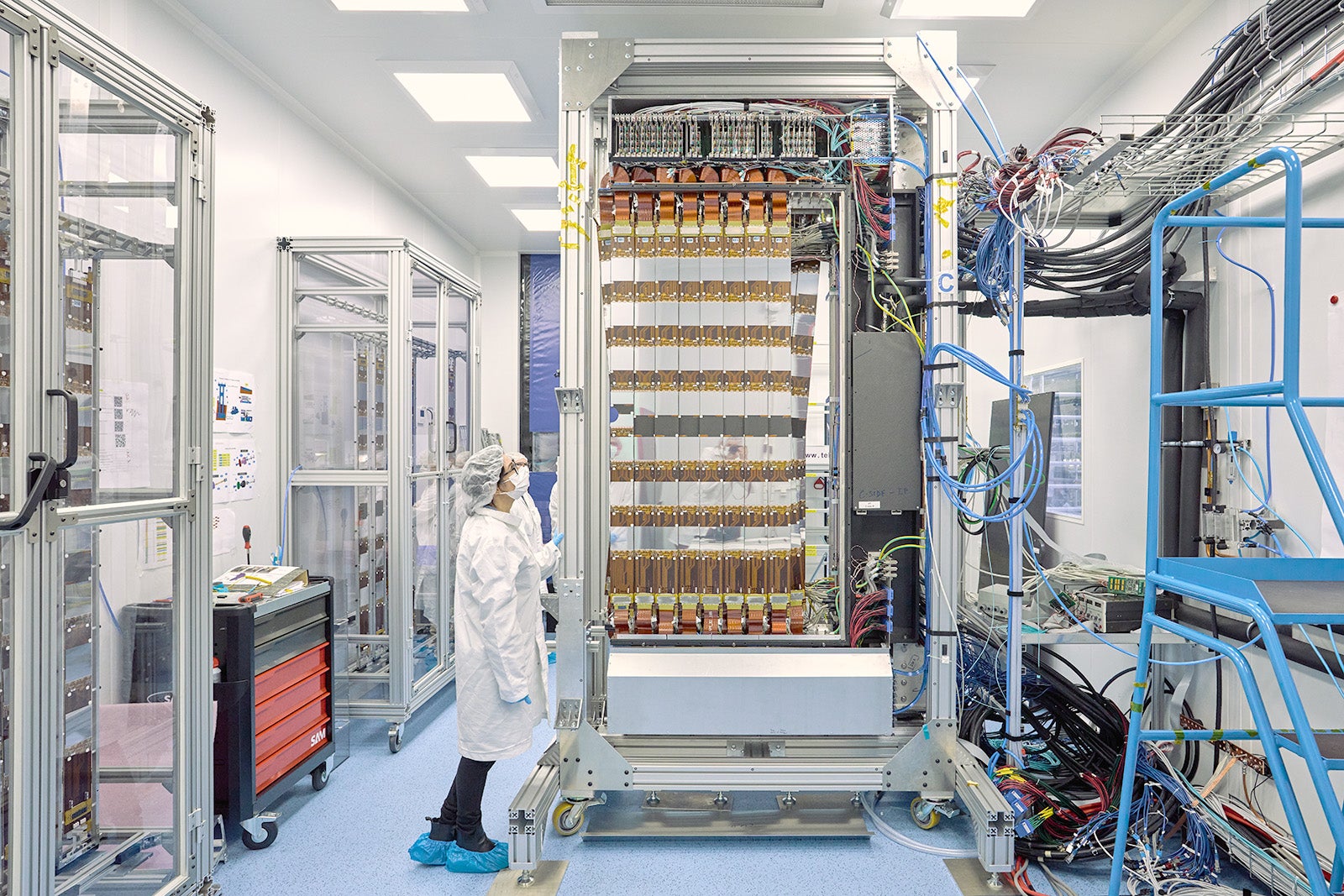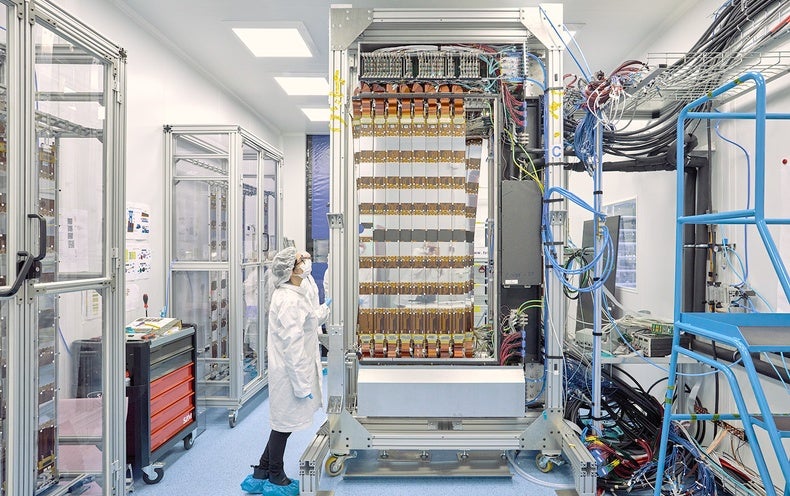
A once-promising hint of new physics from the Large Hadron Collider (LHC), the world’s largest particle accelerator, has melted away, quashing one of physicists’ best hopes for a major discovery.
The apparent anomaly was an unexpected difference between the behaviour of electrons and that of their more-massive cousins, muons, when they arise from the decay of certain particles.
But the latest results from the LHCb experiment at CERN—Europe’s particle-physics laboratory near Geneva, Switzerland, which hosts the LHC—suggest that electrons and muons are produced at the same rate after all.
“My first impression is that the analysis is much more robust than before,” says Florencia Canelli, an experimental particle physicist at the University of Zurich in Switzerland who is a senior member of a separate LHC experiment. It has revealed how a number of surprising subtleties conspired to produce an apparent anomaly, she says.
Renato Quagliani, an LHCb physicist at the Swiss Federal Institute of Technology in Lausanne, reported the results at CERN on 20 December, in a seminar that attracted more than 700 viewers online. The LHCb collaboration also posted two preprints on the arXiv repository.
Unbalanced decay
LHCb first reported a tenuous discrepancy in the production of muons and electrons in 2014. When collisions of protons produced massive particles called B mesons, these quickly decayed. The most frequent decay pattern produced another type of meson, called a kaon, plus pairs of particles and their antiparticles—either an electron and a positron or a muon and an antimuon. The standard model predicted that the two types of pair should occur with roughly the same frequency, but LHCb data suggested that the electron–positron pairs occurred more often.
Particle-physics experiments frequently produce early results that slightly deviate from the standard model, but turn out to be statistical flukes as the experiments collect more data. But that didn’t happen this time. Instead, as time went on, the B-meson anomaly seemed to become more conspicuous, reaching a confidence level known as 3 sigma—although it still did not reach the level of significance often used to claim a discovery, which is 5 sigma. A number of related measurements on B mesons also revealed deviations from theoretical predictions based on the standard model of particle physics.
The results reported this week included more data than the previous LHCb measurements of B-meson decays, and a more thorough study of possible confounding factors. The apparent discrepancies in the earlier measurements involving kaons turned out to be caused in part by misidentifying some other particles as electrons, says LHCb spokesperson Chris Parkes, a physicist at the University of Manchester, UK. Although LHC experiments are good at catching muons, electrons are trickier for them to detect.
Refocusing the search
The result is likely to disappoint many theorists who have spent time trying to come up with models that could explain the anomalies. “I’m sure people would have liked us to find a crack in the standard model,” says Parkes, but in the end, “you do the best analysis with the data you have, and you see what nature gives you”, he says. “It’s really how science works.”
Although the latest result had been rumoured for months, its confirmation comes as a surprise, says Gino Isidori, a theoretical physicist at the University of Zurich who was at the CERN talk, because a coherent picture seemed to be emerging from related anomalies. This could have pointed to the existence of previously unseen elementary particles that affect the decay of B mesons. Isidori gives the LHCb collaboration credit for being “honest” in admitting that its previous analyses had problems, but he regrets that it took so long for the collaboration to find the issues.
However, some other anomalies, including some recorded in B-meson decays that do not involve kaons, could still turn out to be real, Isidori adds. “Not all is lost.”
Marcella Bona, an experimental physicist at Queen Mary University of London who is part of yet another LHC experiment, agrees. “It looks like theorists are already thinking about how to console themselves and refocus.”
The remaining hopeful hints of new physics include a measurement that found the mass of a particle called the W boson to be greater than expected, announced in April. But a separate anomaly, also involving muons, could be going away. The muon’s magnetic moment had seemed to be stronger than predicted by the standard model, but the latest theoretical calculations suggest that it is not, after all. Instead, the discrepancy could have originated in miscalculations of the standard model’s predictions.
This article is reproduced with permission and was first published on December 20 2022.
Stay connected with us on social media platform for instant update click here to join our Twitter, & Facebook
We are now on Telegram. Click here to join our channel (@TechiUpdate) and stay updated with the latest Technology headlines.
For all the latest For News Update Click Here

